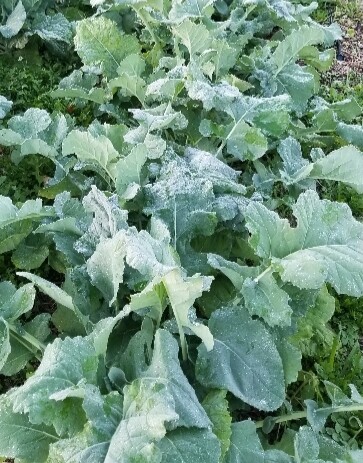
Finally, it has frosted. It was halfway through November, but at last there was frost on the pumpkins, and on the collard patch as well.
As every Southerner knows, you never eat collards until after the first frost. In a fall vegetable garden, the first frost sweetens the collards, turning starches into sugars and improving the flavor of vegetables. They are easily the best tasting greens on the planet.
I once went through the line at Food Lion with a couple bunches of collards, and since they weren’t marked, the checkout girl asked what they were. What were collards? Who doesn’t know what collard greens are?
Apparently, lots of people aren’t familiar with collard greens. They know spinach, they know kale, but they haven’t the foggiest idea about collards
Collards were a staple in our house. My Dad and my Uncle Jim could eat a half a garden row of collards at a single sitting. I have since come to relish these tasty greens. They are delicious and they are easy to grow,
You can buy small collard plants or sew them from seed if your garden soil is fine enough. I chose the plants since we were still in something of a drought, and they have done well. I once had collards to winter over. The poor plants looked decimated after multipole frosts and snows, but they bounced back to life in early March, and I continued to pick them.
Cooking collards requires time. Several hours, at least. I believe the longer you cook them the better they get, and they taste even better as leftovers the next day. Some season their collards with onions and spices, but I prefer just salt and pepper, a sliver of fat back and a sprinkle of sugar for good luck. And you are always in luck if you have a bath of collards on the stove top.

